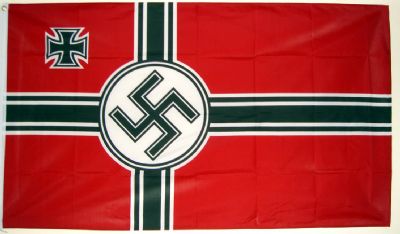- Nazi Germany
- Kingdom of Fascist Italy
- Empire of Japan
- Kingdom of Hungary
- Romania
- Kingdom of Bulgaria
- Finland
- Thailand
Nazi Germany

Gewehr 41

Type: Semi-Automatic Rifle
Year production started: 1941
🔫🔫🔫🔫🔫
Gewehr 43

Type: Semi-Automatic Rifle
Year production started: 1943
🔫🔫🔫🔫🔫
Kar98k

Type: Bolt Action Rifle
Year production started: 1898
🔫🔫🔫🔫🔫
STG 44

Type: Fully-Automatic Rifle
Year production started: 1944
🔫🔫🔫🔫🔫
Volkssturmgewehr (Also known as People’s Assault Rifle)

Type: Fully-Automatic Rifle
Year production started: 1945
🔫🔫🔫🔫🔫
Wimmersperg Spz (Used by Waffen SS)

Type: Fully-Automatic Rifle
Year production started: 1944-1945
🔫🔫🔫🔫🔫
GBD 79

Type: Fully-Automatic Rifle
Year production started: 1945
🔫🔫🔫🔫🔫
FG-42

Type: Fully-Automatic Rifle/LMG/Battle Rifle
Year production started: 1942
🔫🔫🔫🔫🔫
EMP 44

Type: Submachine gun
Year production started: 1943
🔫🔫🔫🔫🔫
Erma EMP

Year production started: 1931
Type: Submachine gun
🔫🔫🔫🔫🔫
MP 28 (Also known as Waffe 28 and SIG 28 when used by Chinese)

Year production started: 1928
Type: Submachine gun
🔫🔫🔫🔫🔫
MP 35

Year production started: 1935
Type: Submachine gun
🔫🔫🔫🔫🔫
MP 40

Year production started: 1940
Type: Submachine gun
🔫🔫🔫🔫🔫
MP 3008

Year production started: 1945
Type: Submachine gun
🔫🔫🔫🔫🔫
Barnitzke Machine gun

Year production started: 1944
Type: LMG
🔫🔫🔫🔫🔫
MG 15

Year production started: 1915
Type: LMG
🔫🔫🔫🔫🔫
MG 34

Year production started: 1934
Type: LMG
🔫🔫🔫🔫🔫
MG 42

Year production started: 1942
Type: LMG
🔫🔫🔫🔫🔫
VMG 1927

Year production started: 1927
Type: LMG
🔫🔫🔫🔫🔫
Luger P08 Pistol

Year production started: 1898
Type: Handgun
🔫🔫🔫🔫🔫
Mauser C96

Year production started: 1896
Type: Handgun
🔫🔫🔫🔫🔫
Walther P38

Year production started: 1938
Type: Handgun
🔫🔫🔫🔫🔫
Mauser M712 Schnellfeuer

Year production started: 1937
Type: Handgun
🔫🔫🔫🔫🔫
Kingdom of Fascist Italy

Mannlicher-Carcano M1891

Year production started: 1891
Type: Bolt Action Rifle
🔫🔫🔫🔫🔫
Steyr-Mannlicher M1895

Year production started: 1895
Type: Bolt Action Rifle
🔫🔫🔫🔫🔫
Fucile Armaguerra Mod. 39

Year production started: 1939
Type: Semi-Automatic Rifle
🔫🔫🔫🔫🔫
Beretta Model 38

Year production started: 1938
Type: Submachine gun
🔫🔫🔫🔫🔫
FNAB 43

Year production started: 1943
Type: Submachine gun
🔫🔫🔫🔫🔫
OVP

Year production started: 1918
Type: Submachine gun
🔫🔫🔫🔫🔫
TZ-45

Year production started: 1944
Type: Submachine gun
🔫🔫🔫🔫🔫
Breda Mod. 5C

Year production started: 1935
Type: LMG
🔫🔫🔫🔫🔫
Fucile Mitragliatore Breda Modello 30

Year production started: 1930
Type: LMG
🔫🔫🔫🔫🔫
Breda Model 31

Year production started: 1931
Type: LMG
🔫🔫🔫🔫🔫
Breda 38

Year production started: 1938
Type: LMG
🔫🔫🔫🔫🔫
Fiat-Revelli Modello 1935

Year production started: 1935
Type: LMG
🔫🔫🔫🔫🔫
Beretta M1935

Year production started: 1935
Type: Handgun
🔫🔫🔫🔫🔫
Glisenti Model 1910

Year production started: 1910
Type: Handgun
🔫🔫🔫🔫🔫
Bodeo Model 1889 Revolver

Year production started: 1889
Type: Handgun
🔫🔫🔫🔫🔫
Empire of Japan

Type 30

Year production started: 1897
Type: Bolt Action Rifle
🔫🔫🔫🔫🔫
Type 38 Carbine

Year production started: 1905
Type: Bolt Action Rifle
🔫🔫🔫🔫🔫
Type 99 Arisaka M1897

Year production started: 1897
Type: Bolt Action Rifle
🔫🔫🔫🔫🔫
Type 5 Rifle (also known as Type 4 Rifle)

Year production started: 1945
Type: Semi-Automatic Rifle
🔫🔫🔫🔫🔫
Type 100 SMG

Year production started: 1942
Type: Submachine gun
🔫🔫🔫🔫🔫
Model 2 Submachine gun (also known as Nambu Type 2)

Year production started: 1935
Type: Submachine gun
🔫🔫🔫🔫🔫
Type 11 Light Machine Gun

Year production started: 1922
Type: LMG
🔫🔫🔫🔫🔫
Type 99 Light Machine Gun

Year production started: 1939
Type: LMG
🔫🔫🔫🔫🔫
Type 3 Heavy Machine Gun

Year production started: 1914
Type: LMG
🔫🔫🔫🔫🔫
Type 92 Heavy Machine Gun

Year production started: 1932
Type: LMG
🔫🔫🔫🔫🔫
Type 26 Revolver

Year production started: 1893
Type: Handgun
🔫🔫🔫🔫🔫
Type 94 Nambu

Year production started: 1935
Type: Handgun
🔫🔫🔫🔫🔫
Type 14 Nambu Pistol

Year production started: 1902
Type: Handgun
🔫🔫🔫🔫🔫
Hino-Komuro Pistol M1908

Year production started: 1908
Type: Handgun
🔫🔫🔫🔫🔫
Hamada Type 1 Pistol

Year production started: 1941
Type: Handgun
🔫🔫🔫🔫🔫
Kingdom of Hungary

FEG 35M

Year production started: 1935
Type: Bolt Action Rifle
🔫🔫🔫🔫🔫
Danuvia 39M/43M

Year production started: 1939
Type: Submachine gun
🔫🔫🔫🔫🔫
Schwarzlose M1907 Heavy Machine Gun

Year production started: 1907
Type: LMG
🔫🔫🔫🔫🔫
Madsen Golyoszoro (Version of the Danish Madsen Light Machine Gun)

Year production started: 1902
Type: LMG
🔫🔫🔫🔫🔫
Romania

Carcano Rifle (Version of Italian Mannlicher-Carcano)

Year production started: 1891
Type: Bolt Action Rifle
🔫🔫🔫🔫🔫
Orita M1941

Year production started: 1941
Type: Submachine gun
🔫🔫🔫🔫🔫
ZB-53 (And other Czechoslovakion and German Machine Guns)

Year production started: 1936
Type: LMG
🔫🔫🔫🔫🔫
Steyr-Hahn (Version of Austrian-Hungarian Steyr M1912)

Year production started: 1907
Type: Handgun
🔫🔫🔫🔫🔫
Kingdom of Bulgaria

Steyr-Mannlicher M1895

Year production started: 1895
Type: Bolt Action Rifle
🔫🔫🔫🔫🔫
Madsen Light Machine Gun

Year production started: 1902
Type: LMG
🔫🔫🔫🔫🔫
Walther PP (Version of the German Walther P38)

Year production started: 1929
Type: Handgun
🔫🔫🔫🔫🔫
Finland

Finnish Mosin-Nagant M1939 (Also known as Pystykorva)

Year production started: 1939
Type: Bolt Action Rifle
🔫🔫🔫🔫🔫
Suomi KP/-31

Year production started: 1931
Type: Submachine gun
🔫🔫🔫🔫🔫
Finnish Maxim M32-33

Year production started: 1932
Type: LMG
🔫🔫🔫🔫🔫
Lahti-Saloranta M26

Year production started: 1926
Type: LMG
🔫🔫🔫🔫🔫
Kg M40

Year production started: 1940
Type: LMG
🔫🔫🔫🔫🔫
Lahti L-35

Year production started: 1935
Type: Handgun
🔫🔫🔫🔫🔫
Thailand

Siamese Type 66

Year production started: 1903
Type: Bolt Action Rifle
🔫🔫🔫🔫🔫
Type 66 Machine Gun

Year production started: 1902
Type: LMG
🔫🔫🔫🔫🔫
Astra 300

Year production started: 1930
Type: Handgun














































































































































